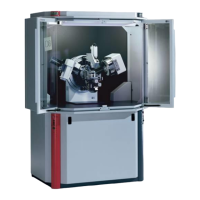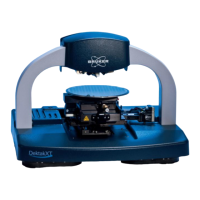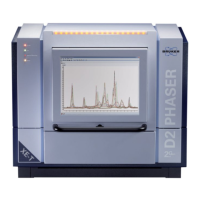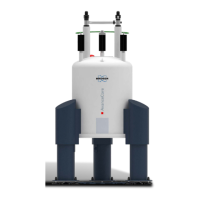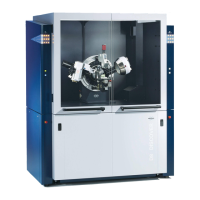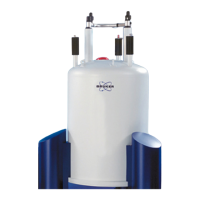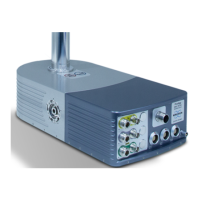Reference Values
DOC-M88-EXX157_V17_04.2019 15 / 96
3 Reference Values
3.1 Angular Accuracy and Instrument Response
The following tables 3.1 and 3.2 list the reference values of peak positions and relative inten-
sities including error bars for four reflections of the Corundum calibration sample to be mea-
sured. The Corundum plate is Bruker AXS’s selected calibration sample, produced from a
NIST SRM1976c origin to fit to a large variety of sample stages, as it is very stable, robust,
long lasting, and does not require any preparation. The certificate is dedicated to Cu-radia-
tion. However, Bruker AXS uses the d-spacing of this standard also for verifying angular ac-
curacy (line-position and FWHM) for Co-radiation.
Line positions for Parallel Beam Geometry differ from Bragg-Brentano because of following
reasons:
NIST SRM1976c includes certified lattice parameters derived from Bragg-Brentano measure-
ments. Line positions can be calculated according Bragg’s law taking into account geometri-
cal aberrations defined by the instrumental setup (cf. reference [2] in References). These ge-
ometrical aberrations are namely:
• Width of X-ray source
• Flat specimen error
• Width of receiving slit / spacing of equatorial Soller slit
• Specimen transparency
• Axial divergence
For Bragg-Brentano Geometry, incl. TWIN / TRIO Bragg-Brentano Geometry, instrumental
parameters (slits, axial Sollers: refer to section Glossary [}20]) have been selected to real-
ize a high resolution setup, reducing influences on Bragg’s-Law below 0.005°.
For Parallel Beam Geometry geometrical aberrations are reduced to
• Spacing of horizontal Soller slit
• Axial divergence
Instrumental parameters for Parallel Beam Geometry, incl. TWIN / TRIO Parallel Beam Ge-
ometry, have been optimized regarding X-ray flux by allowing especially for larger axial diver-
gence. Therefore, the parallel beam geometry and obtained asymmetric peak shapes result
in shifted values for the line position Obs. Max, when compared to Bragg-Brentano measure-
ments.
Reference values for line positions and relative intensities are listed in table 3.1 for Cu-radia-
tion and table 3.2 lists the line positions for Co-radiation.
In the case of Bragg-Brentano, influences from geometrical aberrations on line positions can
be neglected. Reference values for Parallel Beam Geometry require, among others, correc-
tion for axial divergence. The listed reference values take this into account.
Depending on specific measurement setups, individual reflections may not be measurable. In
those cases measurements must be restricted to accessible reflections.

